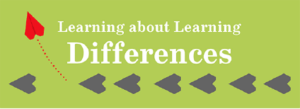 When a local parent sat down with his son to teach him math at the start of 3rd grade, the first thing his son said was, “Math is my nemesis.” His emotional response to learning hit this father like a truck. He wasn’t just dealing with a learning disability in dyslexia, he was dealing with the beginnings of educational trauma.
When a local parent sat down with his son to teach him math at the start of 3rd grade, the first thing his son said was, “Math is my nemesis.” His emotional response to learning hit this father like a truck. He wasn’t just dealing with a learning disability in dyslexia, he was dealing with the beginnings of educational trauma.
A person with dyslexia has average or above average intelligence, but has difficulty in the areas of language processing. The traditional educational system is usually unable to remediate language processing difficulties, most often due to the uniquely intensive skill in that area that is required.
More examples from discussions with other parents include:
- A student breaks down crying when the teacher announces they will be journaling.
- Students are constantly told they are or made to feel stupid or lazy.
- Students are regularly taken out of class and made to feel weird.
- A student was made to do his homework on the floor of the boys bathroom.
- A student loves COVID school from home because the other students don’t know that she only gets 1 of 10 spelling words right.
- Every Friday a student is humiliated with her times tables, when each student is required to announce their score in front of everyone, and the teacher makes a sarcastic comment on her low scores.
- Students are regularly held in class during recess, and held back in grades and compelled to repeat the same education that didn’t work the first time.
Trauma is an emotional response to stress to a disturbing event or situation in one’s life that causes a person to struggle to cope. It can cause strong feelings of hopelessness and diminish a person’s self-worth, self-loathing and learned helplessness.
Trauma negatively changes the brain. Educational trauma causes the brain to have persistent changes that make learning even more difficult.
If nothing is done about educational trauma, students with dyslexia have these outcomes:
- 35% of students with dyslexia drop out
- 50% of people in drug & alcohol treatment have dyslexia
- 70% of juvenile delinquents (youth in jail) have dyslexia
- 50% of people in prison have dyslexia
If something is changed, empowered people with dyslexia represent:
- 35% of Entrepreneurs
- 40% of self-made millionaires
- 50% of rocket scientists
- Overrepresented in the arts and entertainment
Learn more about this by watching the interview series “Learning about Learning Differences” here: www.w2lfoundation.com/lald
Parents currently have to pay for Dyslexia services out of pocket. Taxpayer funded schools are challenged to help kids with dyslexia, because it’s deemed a medical diagnosis. The medical professionals will say it requires an educational intervention. Dyslexia services are not covered by medical insurance. Most schools aren’t equipped to provide the intensive services needed. Parents are left with a terrible choice: fight a very expensive, exhausting and long battle to enforce IDEA, or find a private solution. Meanwhile the mental health and self esteem of the child suffers. The cost both financial and mental is staggering.
Wired2Learn Foundation raises funds to help students with dyslexia get the brain-based education they need to thrive.
Info: www.w2lfoundation.com

